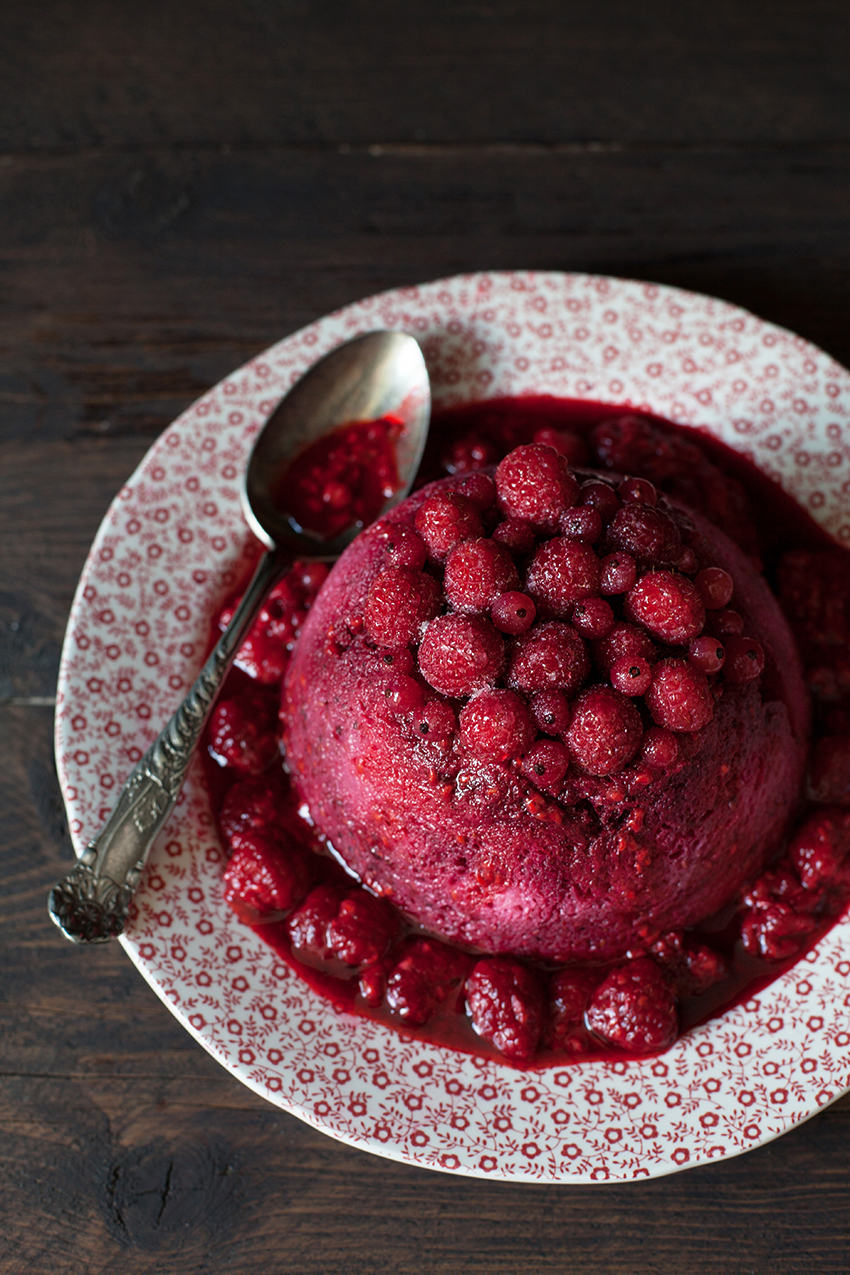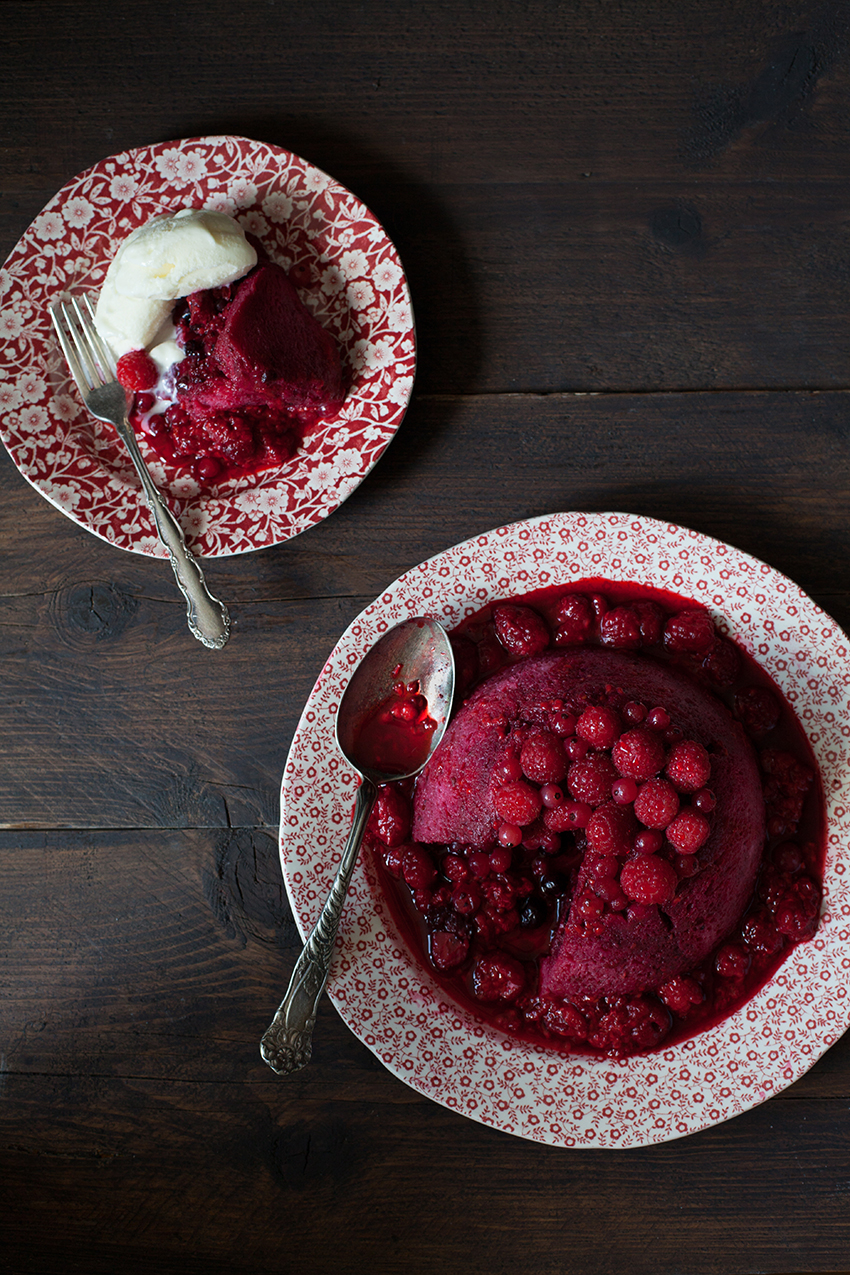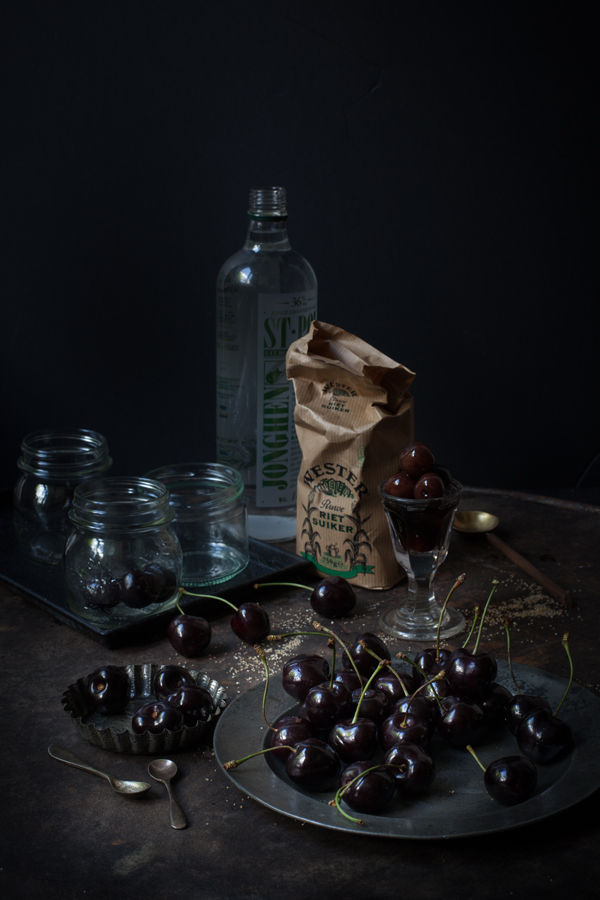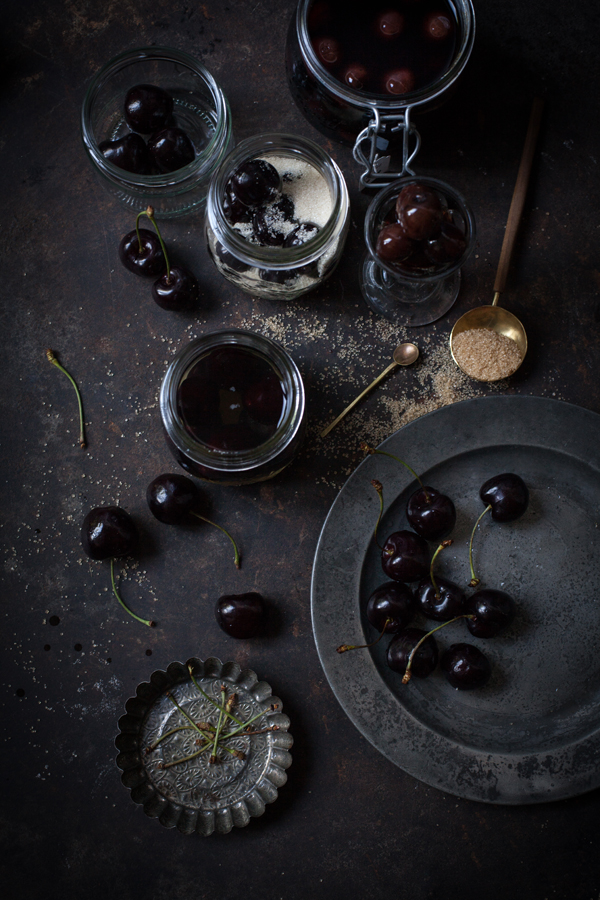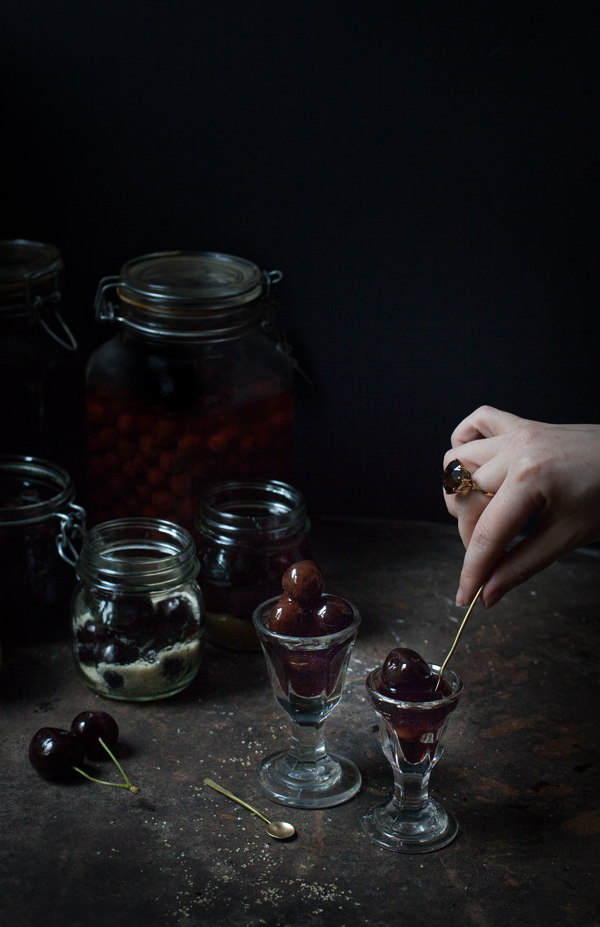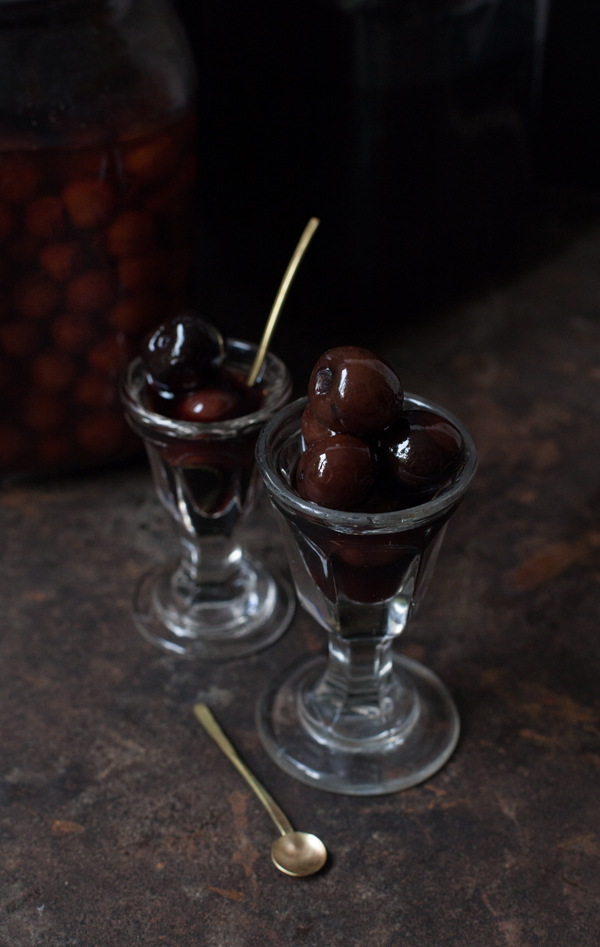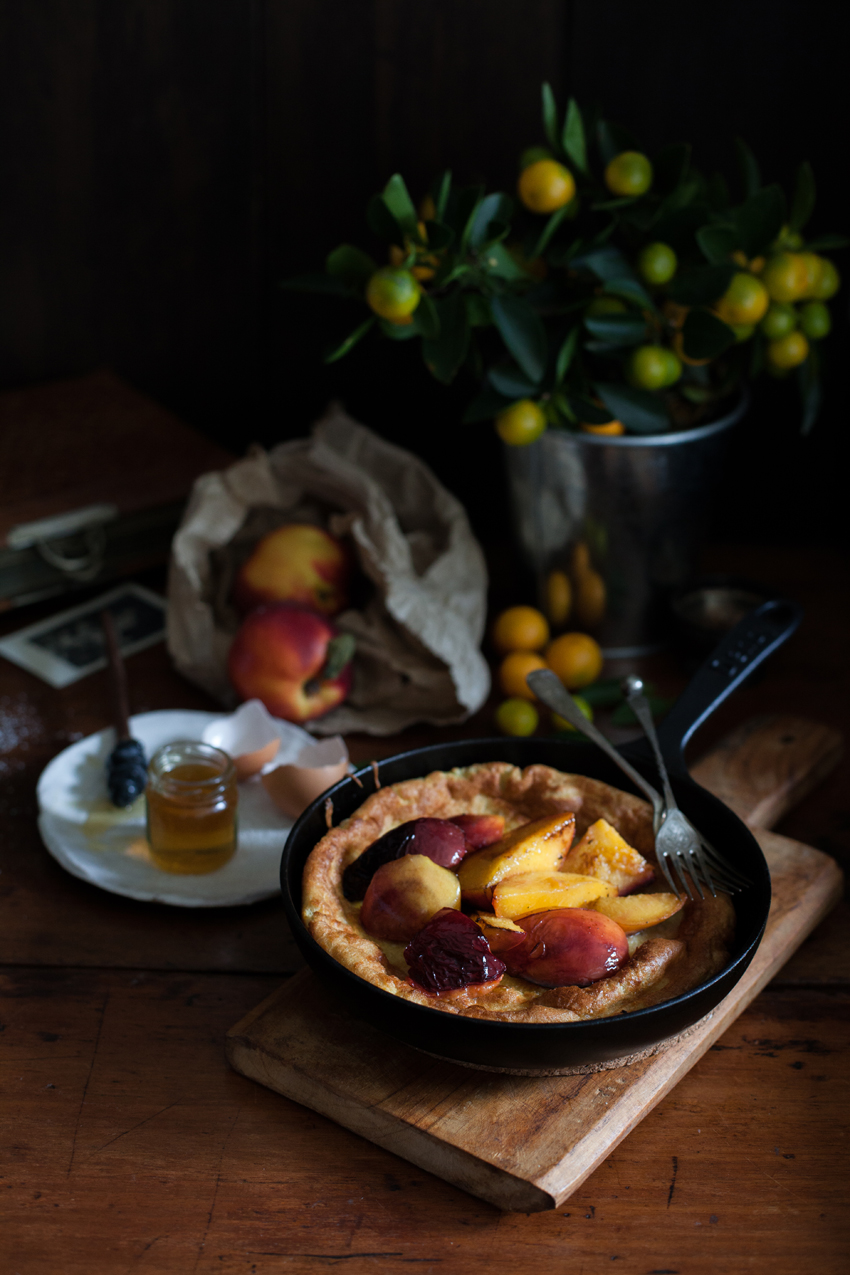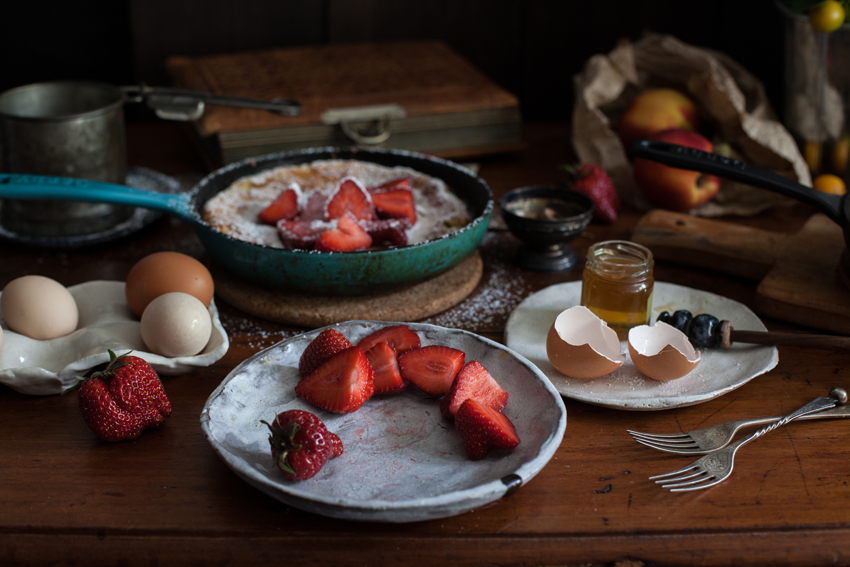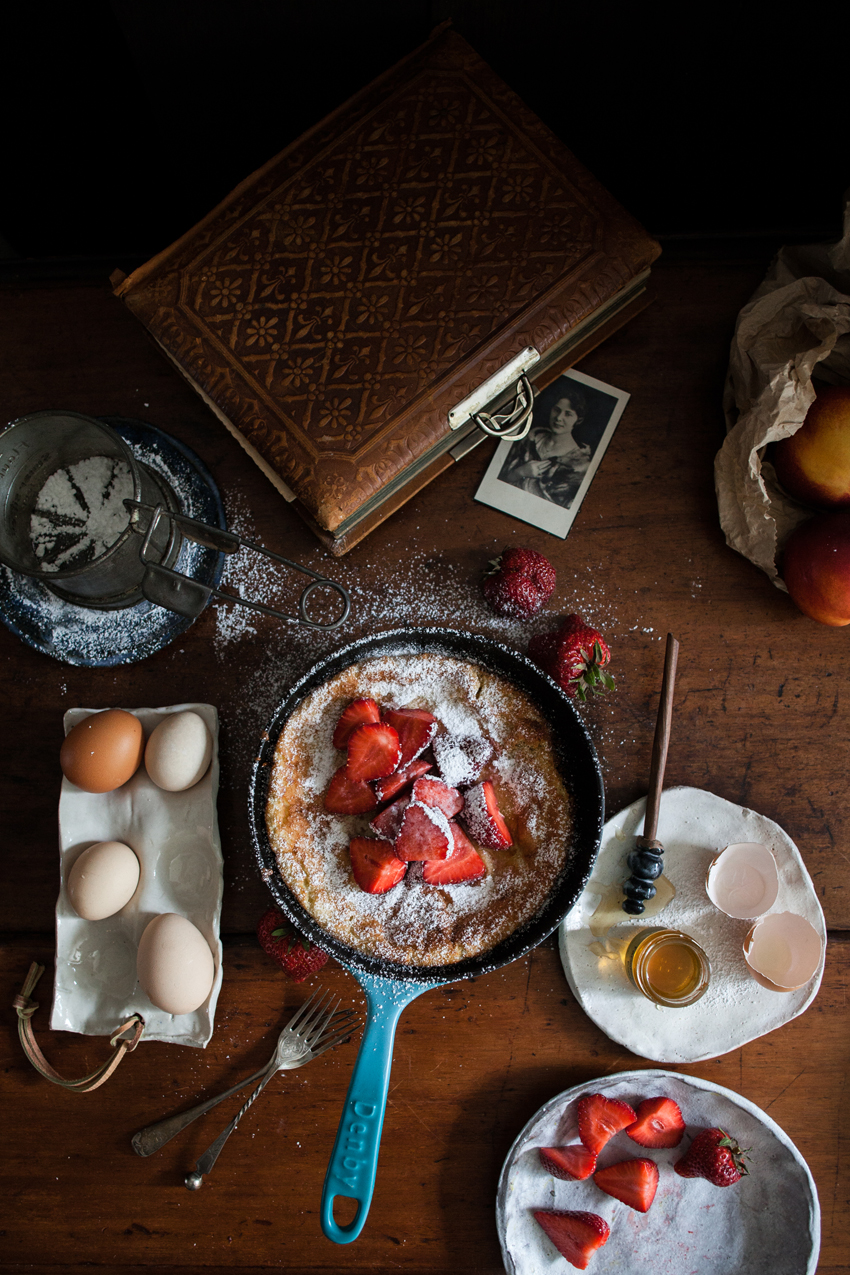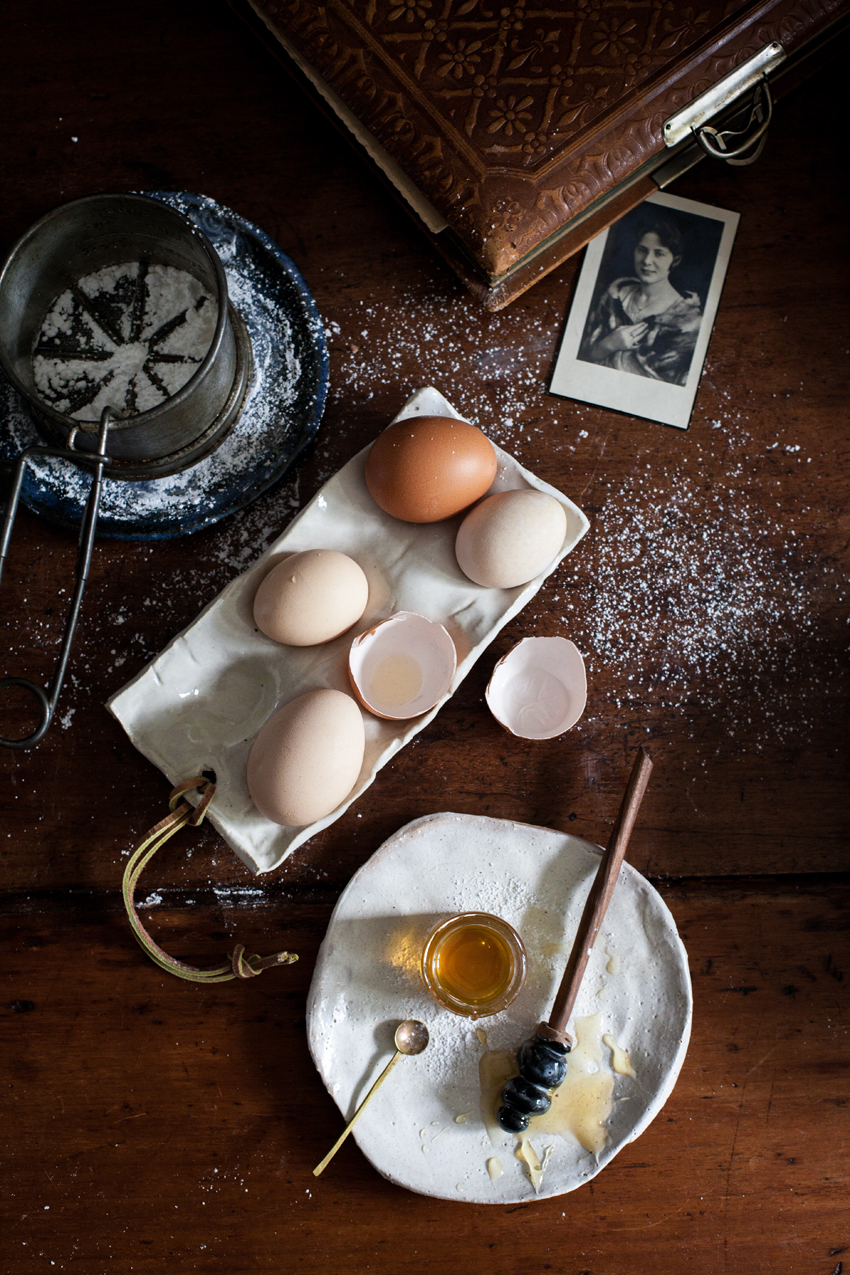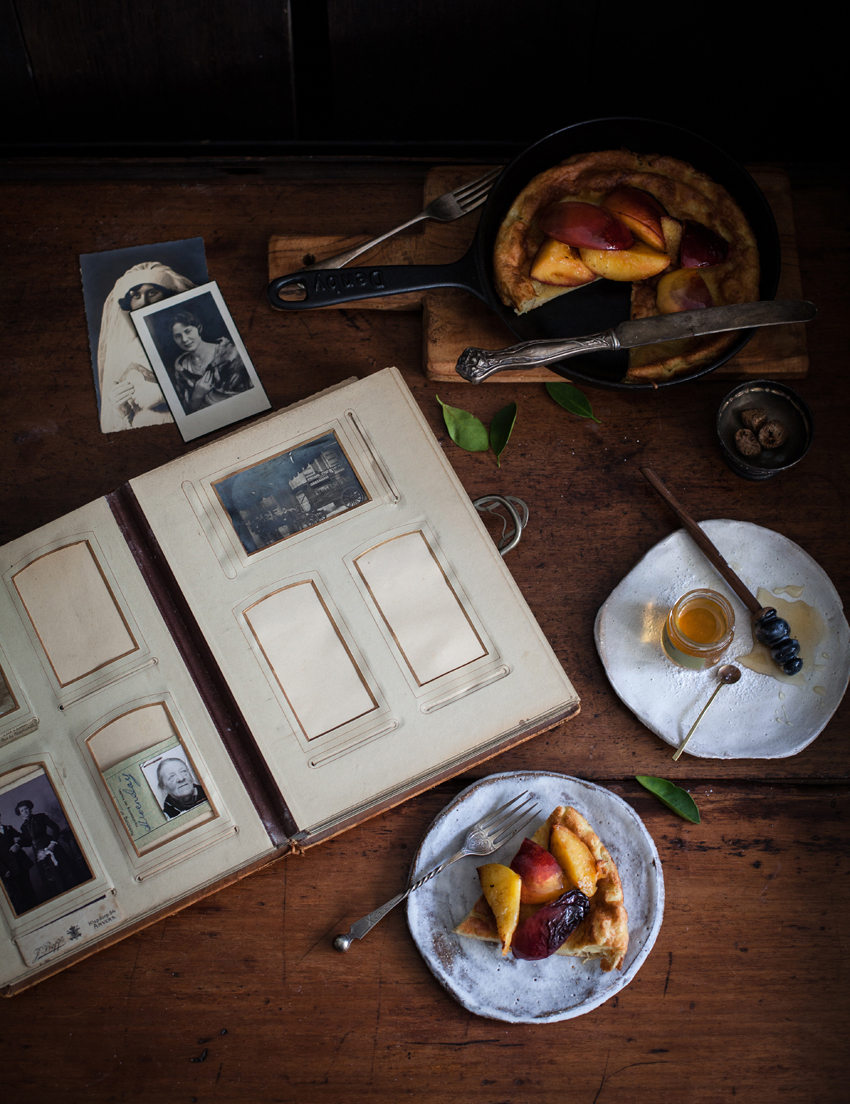The post Summer Pudding appeared first on Miss Foodwise.
]]>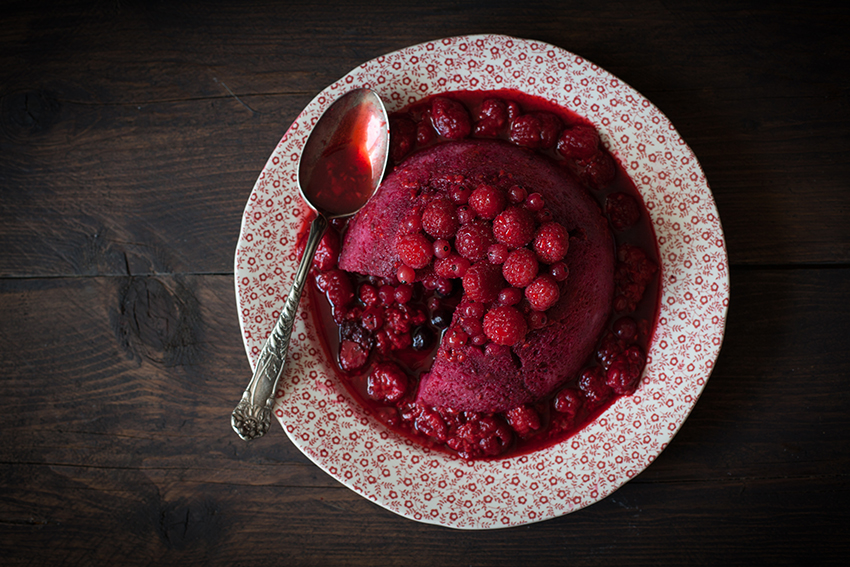
There’s a lot going on in life but I wanted to share this recipe with you because I find when things get too busy or too complicated, an easy yet satisfying pudding can work like a drink of ice cold water on a scorching hot day. What also prompted me was something my friend Sarah (you might remember her from the pies she made for my launch) showed me online, a link to the making of a summer pudding which created outrage and disgust in the comments section. Foreigners (non-Brits) didn’t understand why you would eat soggy bread with fruit, and the video that came with it made even my stomach turn…
But the fact is that Summer Pudding is one of life’s great things. Bread soaked in fruit juice takes me right back to my childhood. I was a very picky eater but you could always feed me bread topped with mashed up strawberries, the deep red juices seeping into the bread making it hard to get it to your mouth in one piece. It was messy eating but really the only thing I enjoyed to eat.
But what is this heavenly thing you ask if you aren’t British or a pudding nut like I am?
A summer pudding is a delightfully light pudding which is made by lining a pudding basin or charlotte mould with stale white bread slices, then filling it up with lightly stewed summer fruits and topping it off with a juice-soaked bread lid. I always enjoy unmoulding this pudding, to see how the white slices of bread have been tinted by the deep crimson juice. It looks like a fresh red wine stain on a crisp white tablecloth. When ready to indulge, serve with cream, or ice cream, whichever you prefer.
As you can read in my book ‘Pride and Pudding‘ this pudding was also known as a ‘hydropathic pudding’ and all the rage in the health spas of the nineteenth century. Its light bread casing instead of pastry or a suet crust (which was usually the case with real pudding) made it the perfect treat for the health-conscious ladies of that era.
The most important factor in making this pudding excellent is to use the best-quality white bread you can get your hands on. Cheap bread full of unnecessary additives will turn slimy and your pudding will certainly collapse. When the best products are used, the outcome is always outstanding. A few months ago when I was in Tuscany to host our ‘Creative Gathering‘ workshop I discovered that Tuscan unsalted bread is actually the very best for Summer Pudding, only it comes in smaller loaves (unless if you bake it into a large tin loaf) so you will have to do some patchwork. I made one for my friend Giulia’s Fettunta party and the Italians all approved.
Any kind of summer fruit should do for the filling: raspberries and redcurrants are traditional, blackberries can mix it up a little, but strawberries should be avoided as they do not remain pleasant enough to enjoy after a couple of hours or a night of soaking. I know, I told you before it reminded me of strawberry sandwiches, but those you eat after seconds of mashing the fruit, this pudding needs to rest at least for a few hours but ideally overnight.
A small news I want to share with you if you are in Belgium
From 30 august you will be able to see Bake Off Vlaanderen on VIER, as you might already know I am one of the judges. The program will be as beautiful as the Great British Bake Off, I promise you this! 30 August 20:30 VIER. Follow the conversation on social media with the hashtag #BakeOffVL
Makes enough for a 17 cm diameter pudding basin; you could also use a rectangular cake pan (though I do not like the shape) or a charlotte mould
What you need
- 650 g raspberries
- 150 g blackberries
- 100 g redcurrants, or blueberries or frozen mixed berries
- 50 g (1¾ oz) sugar
- a loaf of plain white bread
Lightly grease the pudding basin and line with plastic wrap so the pud will be easier to remove when soaked all the way through.
Toss all the berries into a saucepan and heat gently with the sugar to get the crimson juices running, no longer than 2–3 minutes. When using frozen berries, which is fine and far more economical, do the same, but it will need a little longer to stew. Let the berries cool in the pan.
Cut a round out of a slice of your bread to fit the bottom of the basin. Now cut the rest of the bread in 1 cm (3/8 inch) thick slices—about 6 slices or as many as you need—and trim them into a slight trapezium shape to fit the sloping edges of the bowl. If your bowl is straight or you are using a cake pan
or charlotte mould, you don’t need to fuss with cutting shapes, just remove the crusts. On this occasion you really do need to remove the crusts.
Line the basin or mould with the bread, making sure there are no gaps, so the filling will stay in. Now spoon the cooled berries into the bread-lined basin, reserving as much of the juice in the saucepan as you can manage.
Cover the pudding with another slice or slices of bread and pour over some of the reserved juice so the bottom is nicely covered, nothing more. Reserve the remaining juice for serving.
Place a plate or a lid on the pudding and put a weight on top of it. A tin of tomatoes is what I use.
Refrigerate overnight so the bread can soak up the juices nicely.
When ready to serve, open the plastic wrap, place a plate on
top of the basin or mould and invert.
Pour over the reserved juice and serve with vanilla ice cream, or just as it is.
The post Summer Pudding appeared first on Miss Foodwise.
]]>The post Cherry brandy… the first step towards winter appeared first on Miss Foodwise.
]]>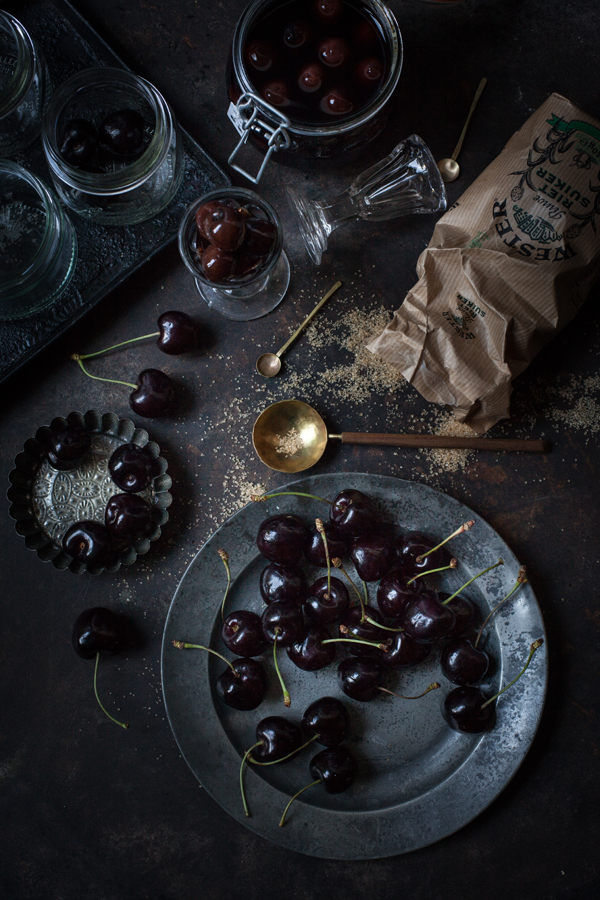 Preparing the cherry brandy or ‘Kriekenborrel’ as we called it in Belgium, is the first step towards Christmas and winter for me. On Christmas eve when I was a child, I was allowed one single drunken cherry in a small dainty glass as a treat. This is how memories are made, and how time and time again when Christmas comes, you need certain flavours to transport you back to the past. Nostalgia and Christmas go hand in hand. It is the one western tradition that is still going strong. People prepare things like this cherry brandy and plum pudding months in advance. The anticipation grows in the jars, and by every spoonful of brandy that is poured over the pudding every week.
Preparing the cherry brandy or ‘Kriekenborrel’ as we called it in Belgium, is the first step towards Christmas and winter for me. On Christmas eve when I was a child, I was allowed one single drunken cherry in a small dainty glass as a treat. This is how memories are made, and how time and time again when Christmas comes, you need certain flavours to transport you back to the past. Nostalgia and Christmas go hand in hand. It is the one western tradition that is still going strong. People prepare things like this cherry brandy and plum pudding months in advance. The anticipation grows in the jars, and by every spoonful of brandy that is poured over the pudding every week.Preserving fruit in ‘Jenever’ which is almost identical to Gin, has been a custom in our parts for many decades. It was particularly popular in the 1950’s when my grandmother was young. Because my mother grew up with it, it was sentimental to her, which is why she taught me how to make it. I still have the last jar of cherries my mum and I drowned in Eau de Vie in 1998. It is quite special, because the jar holds memories as well as cherries. In my kitchen I have jars from 2006, 2010, 2011 and 2013. Some I give away, ladling the cherries and booze out into smaller jars to decorate with a ribbon and the date. They go to people I know will appreciate my precious preserve. Because I part with memories of making them and hope they will be cherished.
My cherries of choice are dark English cherries from Kent. Their flesh is thick and eats like a plum, their juice is deep red like the liqueur it produces after months of ripening. The ones you see pictured here are of the ‘Regina’ variety and grown in Kent. It’s good to see Kentish cherries on the shelves of English supermarkets. This means that the farm will have a set income and that it is worth to harvest the fruit. Far too foo often fruit is left on the trees because harvesting would cost too much. And although I’m not a particularly big fan of supermarkets, not everyone lives near a farmshop or market where you can obtain these beauties and other produce grown on local soil.
In Belgium it is hard to find home grown cherries too, again the expense of harvesting and demand are too high. Most of our cherries come from Turkey. They are usually quite flavourless and dull. When I was a child, we had cherries from Belgium and France in our shops. One particular type, which we called white bellies, were my absolute favourite. They reminded me of the red blushing apple of snow white so I pretended they were tiny apples. You see them rarely these days which is a terrible shame. It is those wonders of your childhood you miss when you grow up. Fruit you got every season which is now only available rarely and at premium prices in premium stores. The farmers wife at my local farmshop tells me that when they go to the fruit and veg market early in the morning to buy the produce they do not grow (they are a dairy farm), they see less and less older farmers selling the more rare fruit like mirabelle plums, sloes and medlars.They harvest them from their farm hedges from trees much older then they are themselves. But as these older farmers retire, so is lost the supply of these most wonderful fruits. I appreciate the farmshop for buying the produce from these old men, that way it is still possible to see more of the season than just what the supermarkets wishes us to see.
What about the future of cherries and other home grown fruits? One of the fears of Brexit in Britain is that even less home grown fruit will be harvested. Most fruit pickers are immigrant workers because English (and Belgian people too for that matter) don’t want to do the hard work. So the question is, will there be an even further decline in home grown fruit? Well… Britain hasn’t left the EU yet and we can’t know now what will happen later. So lets just buy local when we can.
In the 19th century most fruit was picked by the poorest people in the cities. Just like with hop picking, families would move out of towns like London to spend the summer by the orchards. Although it was hard labour, being out of the city meant that the children had clean air and nature to run and play in before and after work. They saw it as a vacation, a working holiday. The money earned would go to the mother, men usually stayed in the towns to work, and the women would use the money to buy well needed items like new shoes and clothes for the children.
The past 50 years 90 % of the cherry orchards have disappeared. Before the second world war there were about 40 000 acres of cherry orchards in England alone. These were mainly in Kent, Worcestershire and Herefordshire.
The labour was very intensive as the trees were very high, too high to cover the crop from the birds. Cherry pickers would climb on very high ladders with baskets tied to their waists. Nowadays trees are kept smaller so they can be managed more easily and trey can be covered with netting to keep the birds from stealing or damaging the entire crop. When you drive through Kent at this time of the year, you can spot the netting. It looks like a giant spider has creeped out of that Harry Potter book to cover the trees in her enormous web.
To be able to enjoy cherries for longer, drowning them in strong alcohol really is the best way.
As true and loyal readers of my blog will know, I have featured a recipe for my family cherry brandy before. This one is quite the same, but using more readily available alcohol and more sugar so it keeps for longer. Traditionally this liqueur should be made with sour cherries, not sweet, but it works just fine with either.
A little news, I am organising two creative gatherings in the autumn. One will be a two day retreat in Tuscany the last weekend of october, the other is a one day in Dorset end of november. If you are interested, details will be shared in the next weeks but you can already email me to be put on the list without obligation. We will be cooking, photographing, styling, eating, drinking, learning and we will also have the most wonderful time with like-minded creatives.
On to the recipe now
What do you need
sour or sweet cherries: 1kg
A neurtal alcohol of minimum 35%
(vodka, jenever, gin, everclear, eau de vie,…)
raw cane sugar: 500 g
brown sugar or mollasse: 1 tablespoon
glass preserving jars
Method
Rinse the cherries well and pad dry with kitchen paper. Remove the stalks carefully without damaging the fruit.
Layer the cherries with the sugar, pour over the alcohol and close the jar.
Put in a dark place at room temperature – a cellar is perfect – and shake every day for a week
Forget about the cherries until christmas or thanksgiving!
Enjoy in a dainty glass or add them to your cake batter (don’t forget the kernels!). If you got some leftover from last year, toss on your ice cream. Also a treat baked into a batter pudding or clafoutis.
You might also enjoy
Cherry tart and prostitution >
The post Cherry brandy… the first step towards winter appeared first on Miss Foodwise.
]]>The post Batter pudding, a Dutch baby and the scent of a ripening nectarine appeared first on Miss Foodwise.
]]>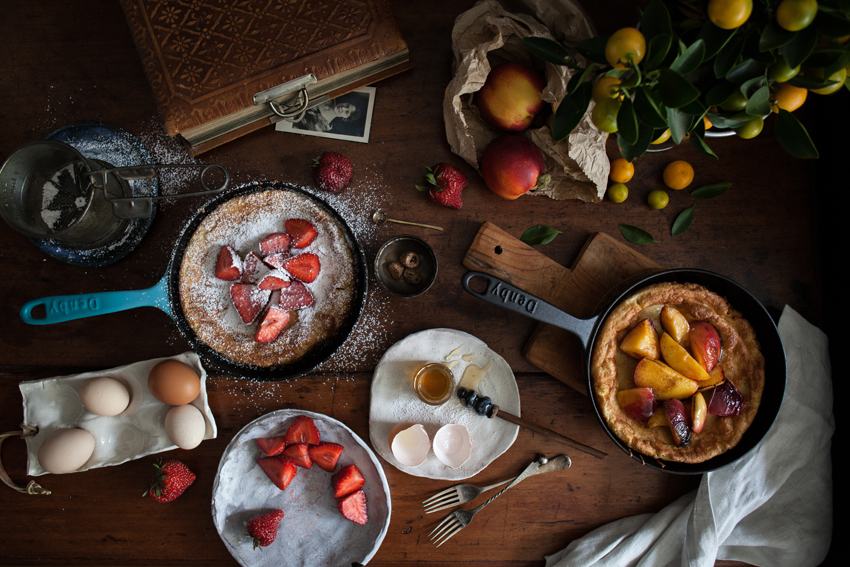 I can clearly remember the first time my brain registered the juiciness of a nectarine and its heavenly scent. It was summer and unusually hot. I was about 3 or 4 years old and me and my mother, the lady next door and her son Sam who had the same age, had walked quite a distance to a park where we could play. After we had played a while, Sam and I were each given an unusually large nectarine – mostly because our hands were very small. They came out of a brown paper bag, and I can still recall the sound of the bag, and the scent that came next when it was presented to me to pick my fruit. I remember that I smelled the skin of the fruit, looked at it, turned it around and was then handed a piece of white kitchen paper to catch the juice that was about to drip from my chin and hands. I investigated the skin between my fingers, the texture of the fruit. I recall the bitterness of the magenta red stone as I was trying to get the last of the flesh from it.
I can clearly remember the first time my brain registered the juiciness of a nectarine and its heavenly scent. It was summer and unusually hot. I was about 3 or 4 years old and me and my mother, the lady next door and her son Sam who had the same age, had walked quite a distance to a park where we could play. After we had played a while, Sam and I were each given an unusually large nectarine – mostly because our hands were very small. They came out of a brown paper bag, and I can still recall the sound of the bag, and the scent that came next when it was presented to me to pick my fruit. I remember that I smelled the skin of the fruit, looked at it, turned it around and was then handed a piece of white kitchen paper to catch the juice that was about to drip from my chin and hands. I investigated the skin between my fingers, the texture of the fruit. I recall the bitterness of the magenta red stone as I was trying to get the last of the flesh from it.
I had lost this memory for years because I had not encountered the scent of nectarines like that for a long time… I complained for the last decade that peaches and nectarines were harvested too early, that they never ripened, but rotted instead. They were as hard as a rock, cold from the fridges in which they were kept, like many people like them. They eat them like an apple, and enjoy the tangy unripe flavour. But this is not the way for me… You have to wait until the fruit gives off a heavenly scent as if it is a last breath. Only then, the fruit is ready to eat. Only then would the juices flow so rudely down from your chin and down into the collar of your dress or shirt.
I now feel like I have been given back something that I had lost, something I had forgotten that I had. Because saturday I opened a bag of unripe nectarines that I had forgotten about in my wicker shopping basket from the day before. It had been warm in our house, and the moment I opened the bag, there was that last bewitching breath of the nectarines… telling us they were ready to be devoured before they become so ripe that their skin only holds juice rather than flesh.
I feel blessed to have been given back a memory of my childhood with the scent of nectarines. This only goes to show how powerful the memory of taste and smell can be. Back came that summers day in the park, the tiredness from walking, the relief from hunger in the afternoon with the fruit, the long walk home in the sun… My little friend Sam who I was going to marry because he was going to be a fireman when he grew up, his mother, my mother. Back came the memory of dinner that night, my mums special Moussaka which isn’t a Moussaka at all. I recall being too tired to eat, nearly falling asleep in my plate of hot food, the window opened in our dining room, a breeze giving a well needed refreshment after possibly one of the warmest days of the year.
Something else was given to me in the last few weeks… a heavy leather photo album that contains photo’s of my ancestors. Up until that day I had never seen any old pictures of my fathers family. The album and a stack of other old pictures had been in the possession of my fathers sister who died over 10 years ago. Only recently when I was in a couple of magazines and newspapers with my book, my aunts daughter, my niece, contacted me. I hadn’t seen her for over 20 years, on my grandmothers funeral to be precise.
I now have an album with a couple of pictures, though it is mostly empty. I had never thought that the sight of old family could be so special. Most of us grow up with frames of pictures on walls and bedside tables, but I had none of my fathers side and few on my mothers side.
I first saw a picture of my dad when he was a boy, he was blonde like I was as a small child. He and a couple of other kids were playing in some field in Antwerp, most likely it is now a new neighbourhood. Then there were pictures of my dad when he was in his late twenties, on family gatherings with my mom. He wore flares and tight tee shirts as was the fashion in the 60’s. On other pictures he was filming and taking pictures, with my mom, niece and aunt around as well. I recognised myself in him, and the face I pull when I’m behind the camera. My dad decided to hold on to those pictures for a while but the oldest ones in the album, I took home. It is quite strange to have such a large album and have it nearly empty, but still it is a family heirloom I will cherish.
With the nectarines so lovely and fragrant I decided to bake batter puddings for tea. They are often referred to as Dutch babies, though they have nothing to do with the Dutch and are an American invention. Basically this is a Yorkshire pudding with a sweet topping. Something that has been eaten in England for a very long time. Leftover puddings from dinner would often be eaten as dessert – for pudding.
Theories on why it is called a Dutch baby are plenty, some say it comes from the Dutch ‘poffertjes’ but the method is different and the Dutch baby or batter pud tastes more like another batter pudding called ‘smoutebollen’ which are balls of dough deep fried in ‘smout’ which is tallow (animal fat) then dusted with icing sugar. But smoutebollen have a yeasted dough while the Dutch baby/batter pudding has a pancake dough.
The ‘Dutch’ could refer to the German-American immigrants known as the Pennsylvania Dutch, so ‘Dutch’ is in this case a corruption of the German autonym ‘deutsch’ (meaning German in German). If you want to know more about pancake-type history, I would recommend you read the whole story in ‘Pancake: a Global History’ by Ken Albala.
Batter puddings – or Dutch babies
What do you need (makes 2 batter puddings in 25 cm skillets, or 1 large one, or several small ones if using a muffin tray)
- 110 g plain flour
- a pinch of salt
- a teaspoon of vanilla sugar (optional)
- a pinch of nutmeg, or cinnamon if you prefer
- 280 ml milk (oatmilk or any other plant based milk works too)
- 3 large eggs
- sunflower oil, clarified butter, lard or tallow, for frying
Method
Proceed by creating the batter as you would for a pancake batter, adding the flour and pinch of salt to the milk and eggs, making sure there are no lumps. I find that the pudding improves if you leave the batter to rest for 30 minutes or so before cooking.
Preheat the oven to 250°C
Pour 1 cm of sunflower oil, clarified butter, lard or tallow into your cast iron skillets, or cake/muffin tin and set it in the middle of the hot oven. Place a larger tray underneath in case the fat drips: you don’t want extra cleaning and a smoky kitchen afterwards.
When the fat is hot (you will see it spitting): carefully but swiftly pour the batter into it and close the oven door.
Bake for 20–25 minutes without opening the oven until the pudding is puffed up and nicely coloured.
While the pudding is in the oven, you can prepare your fruit for the topping. Strawberries dusted with icing sugar and maybe some cream too is a definite winner. But roasted or baked nectarines or peaches make it into a more cosy pudding. Drizzle the fruit with some Grand Marnier in the pan for a grown up pudding. Roasted apples and pears with spices in winter and autumn, with maybe some blackberries added for colour. Cream or ice cream added to it is good for the soul.
If you are not into puddings that have warm fruit, or cold fruit on a warm pudding, the pud is just as good with a drizzle of honey, syrup (golden, date or whatever fancy syrup) or a simply dusting of icing sugar.
Eat hot.
You might also enjoy:
Cabinet Pudding from my book Pride and Pudding >
Kentish cherry batter pudding >
The post Batter pudding, a Dutch baby and the scent of a ripening nectarine appeared first on Miss Foodwise.
]]>